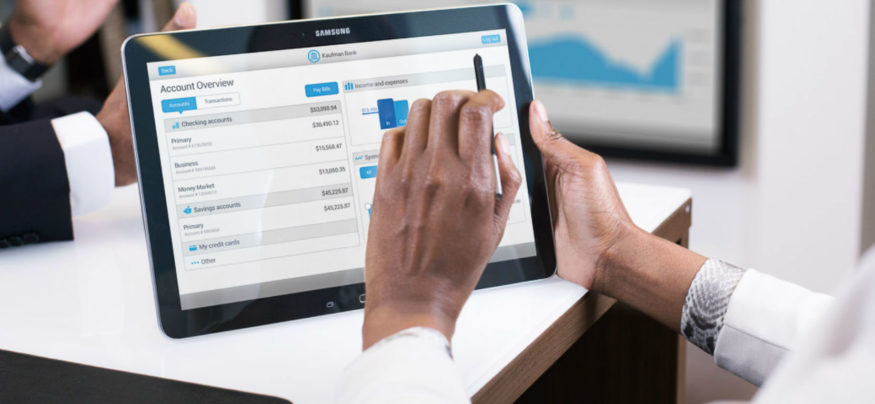Conventional wisdom holds that mobility boosts efficiency and cuts expenses. A mobile workforce leverages technology to get work done in a cost-effective and timely manner.
Certainly, workers believe this to be true. In a recent Economist Intelligent Unit survey, 60 percent of employees said mobile technology makes them more productive. Another study by ARCTOUCH explains 85 percent of mobile workers said their most-used mobile apps save them time, and 83 percent said those apps make them more productive.
Still, government IT decision-makers need more than anecdotal evidence to support their ongoing investments in mobility. How can government managers know for sure that mobility is driving a more efficient and effective workforce? Several key metrics tell the story.
The following concepts help validate the IT manager’s intuitive understanding of the ROI around mobility. They also help address sector challenges of accountability, cost and compliance.
Individual productivity: Individuals who are able to access to their personal and business content securely on a single device are uniquely positioned to benefit from the productivity gains inherent in a mobile workforce. Apps on the business side give ready access not only to email and calendaring, but also enterprise functionality, literally bringing the office into the palm of one’s hand. The BYOD government worker can sync to critical databases, tap into back-end systems and conduct a range of vital business functions on the fly, with measurable outcomes.
With advanced security solutions keeping personal data strictly segregated, managers have peace of mind knowing that critical enterprise data cannot cross-populate. Safely sequestered apart from any personal information, this business data can supply a range of valuable productivity metrics. Are reports timely? Is data up to date? Are managers readily able to validate the work products of the mobile worker? All these metrics help to verify claims of enhanced efficiency for mobile productivity.
Business process measures: Mobility today is more than just a means to check in from a remote location. Robust mobile solutions bring full business functionality to the end user. That’s a boon for the business manager looking to demonstrate the return on a mobile spend. Business processes can be measured, especially in government where documentation is often a legal requirement. It’s possible to track work outputs in detail, measuring a mobile worker’s ability to complete mission-critical tasks on the go.
Even within agencies that still rely on paper processes, the visibility that comes with mobility can be a boon to accountability. As forms and documents migrate increasingly into the digital space, mobile access can help ensure this “paper trail” is completed in a timely and effective way, whether the eventual work output is through literal paper or its digital equivalent.
Mobile Security Is Crucial
Download the white paper to learn why Samsung devices are some of the most secure available. Download Now
Cost reduction: Mobile productivity can significantly reduce the cost of doing business for a government office. In the most direct sense, mobility lessens the expense of the government IT burden by complementing legacy infrastructure and thus lessening the costs associated with maintenance and upgrades.
Cost reduction also can be measured by the numbers of hours spent, or saved, in the course of carrying out various business processes. Managers can take a thorough accounting of the true costs associated with both their IT overhead and their business processes and can use these to glean a true understanding of the ROI around mobility.
Reduction of errors: The error rate around diverse business processes is even easier to measure. Most government managers keep a sound tally of the frequency with which reports must be amended. They know how often documentation gets bounced back for correction. As a result, it can be fairly easy to see the degree to which mobility reduces error rates and improves compliance.
A worker who jots notes while in the field and then inputs information hours or days later is more likely to make mistakes than someone who — equipped with a robust device and a capable suite of apps — tackles the work in real time from wherever he or she happens to be working. Accuracy and efficiency go hand in hand. Fewer errors mean a decreased need to redo work down the line, thus ensuring a higher degree of compliance.
Keeping an Eye on Metrics
Common sense tells us that a mobile workforce armed with secure devices and enterprise-grade applications is going to be more productive. That basic intuition carries some weight, but IT decision makers tasked with making big choices need something more. They need metrics.
Fortunately, workforce effectiveness is eminently measurable, especially when one is looking at the impact of mobility. Individual productivity can be readily gauged, as can business process outcomes. Error reductions are easily measured and even bottom-line cost savings can be calculated by those who pay careful attention to the numbers.
In the case of each of these key metrics, government leaders typically discover that the facts bear out the conventional wisdom, that mobility does indeed drive a more efficient and effective workforce. When is the right time to take that tally? Some IT managers find it helpful to keep a running count of key metrics, while others find a semi-annual checkup sufficient to ensure that productivity is on target. Most would agree with the general managerial rule of thumb: You can never measure too much or too often. Solid metrics are the surest course to driving maximum benefit from a mobile investment.
Our government technology solutions are ready to assist agencies with their digital transformation efforts.








